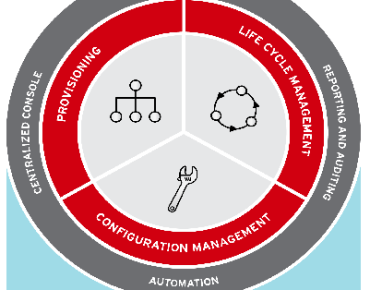Satellite 6 Adds More Control For Red Hat Linux

Red Hat has followed up the roll out of the latest version of its mainstay Enterprise Linux operating system with the beta release of the Red Hat Satellite 6 management suite.
The management system for Red Hat Enterprise Linux 7 is based on a bunch of other open source tools, including Puppet and Foreman, used to automate management of RHEL. David Caplan, Red Hat Satellite 6 principal product manager, noted that this is the first implementation of Puppet on the Red Hat management system, which among other things supports configuration management.
Red Hat said the new version of Satellite reflects the growing complexity of IT systems management by spanning the boundaries between Infrastructure-as-a-Service and Platform-as-a-Service environments as well as management systems on bare metal.
Caplan also referred to Satellite 6 as a "subscription manager" capable of pulling together the disparate elements of an IT infrastructure and "wrapping them into a nice workflow."
The Red Hat manager also touted Satellite 6's "capsule" feature that handles federated services while automating provisioning and localizing content.
Among the capabilities featured in Satellite 6, which was last fully updated in 2012, are upgrading and provisioning bare-metal infrastructure along with improved methods for managing content. Caplan predicted Satellite could play a larger role in content management as software and applications container technologies like Docker enter the cloud mainstream.
At bottom, Satellite 6 is designed to centralize management of RHEL, including provisioning, configuration, content distribution and delivery. It can manage RHEL 7 or previous versions, the company said. Caplan pitched Satellite 6 as a way to monetize RHEL deployments via increased automation as well as "recipe-style" configuration and patch and content management.
Along with Puppet and Foreman, other capabilities added to Satellite 6 include Pulp repository management, Katello content and life cycle management, and Candlepin subscription management.
Satellite "has evolved to be very, very utilitarian," Caplan said in an interview, adding that the new "upstream" version accounts for IT innovations six months down the road. That feature would make it easier, for example, to test new applications, he said.
The latest version of Satellite also provides a "drift" management feature that allows system administrators to re-tune infrastructure that functioned properly at deployment but later tailed off.
Red Hat completed a Puppet ecosystem initiative in February 2014. With the beta release, Red Hat is encouraging customers, partners and the open-source community to download and test Satellite 6 in non-production settings.
General availability of Red Hat Satellite 6 is scheduled for September 2014. At that point, it should be deployable on hosts such as VMware ESXi and Red Hat Enterprise Virtualization (an implementation of KVM) as well as in conjunction with the OpenStack cloud controller and on bare metal. Satellite 6.1 is expected to be ready in early 2015, the company said during its annual summit in April.
Separately, Red Hat also announced a new cloud management certification for the RHEL OpenStack Platform. The certification would allow partners' cloud management tools to interoperate with Red Hat's OpenStack framework.
Related
George Leopold has written about science and technology for more than 30 years, focusing on electronics and aerospace technology. He previously served as executive editor of Electronic Engineering Times. Leopold is the author of "Calculated Risk: The Supersonic Life and Times of Gus Grissom" (Purdue University Press, 2016).











